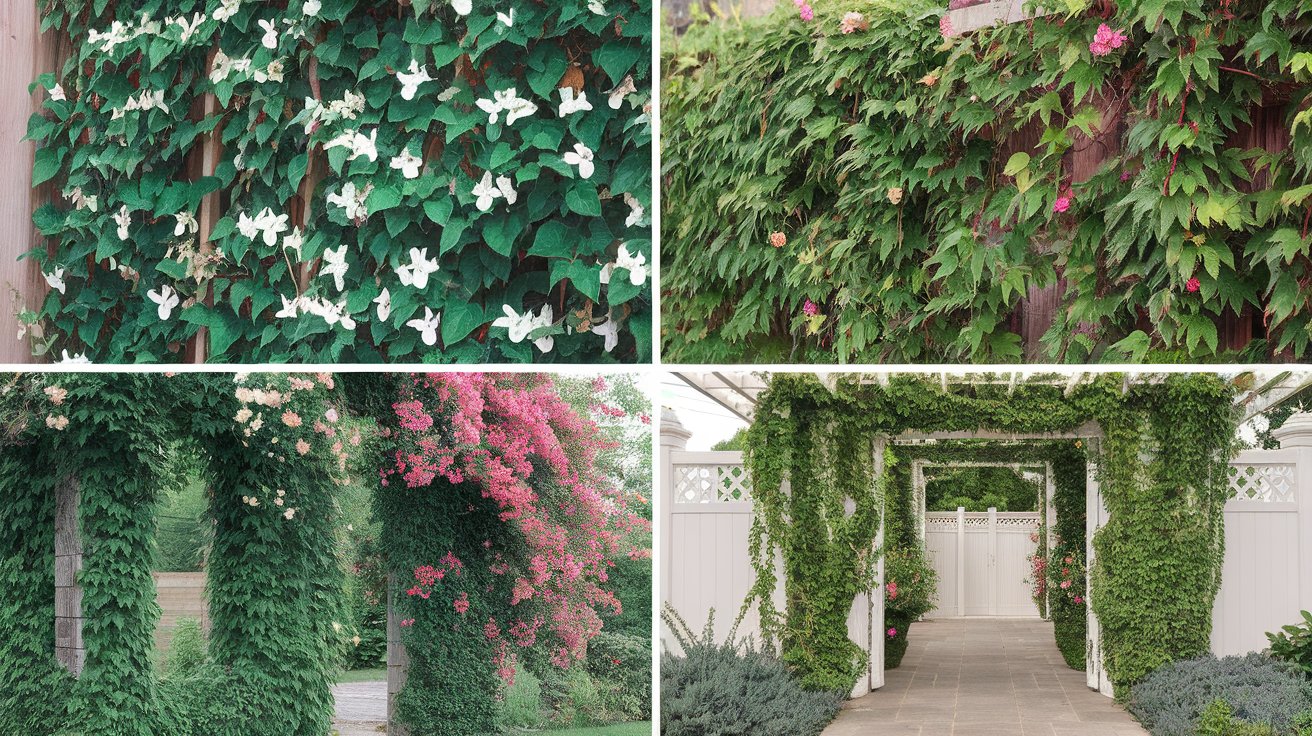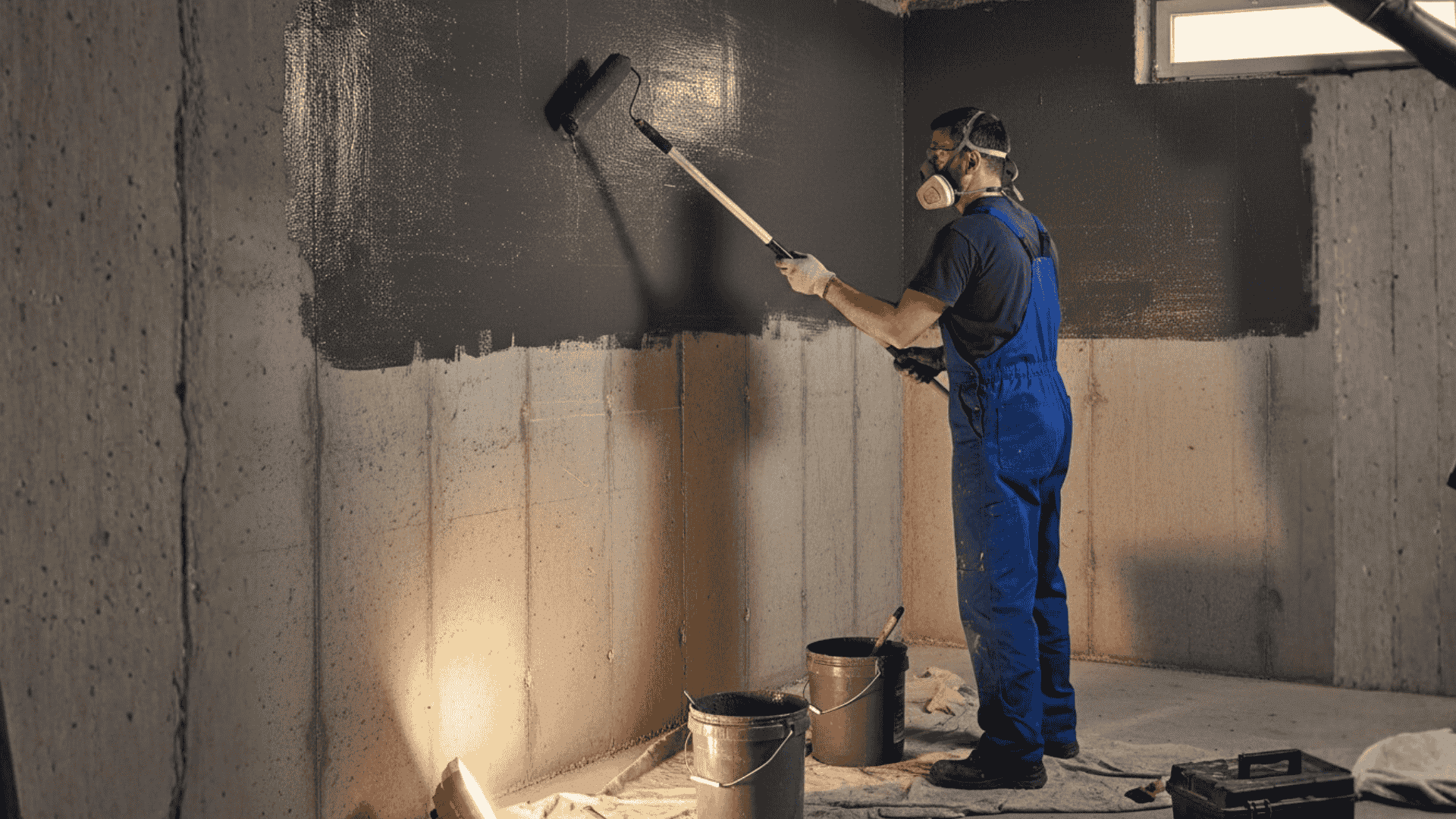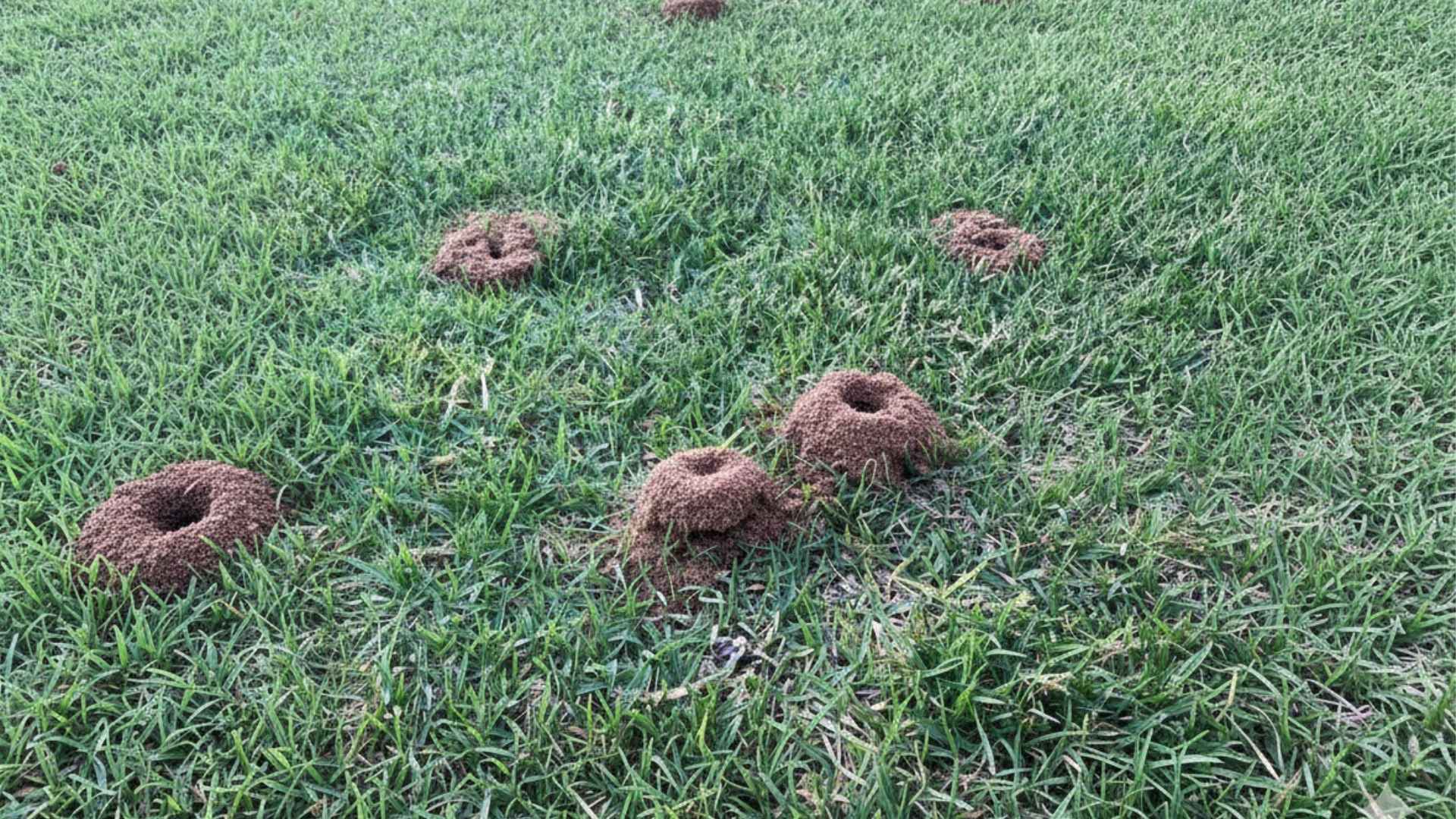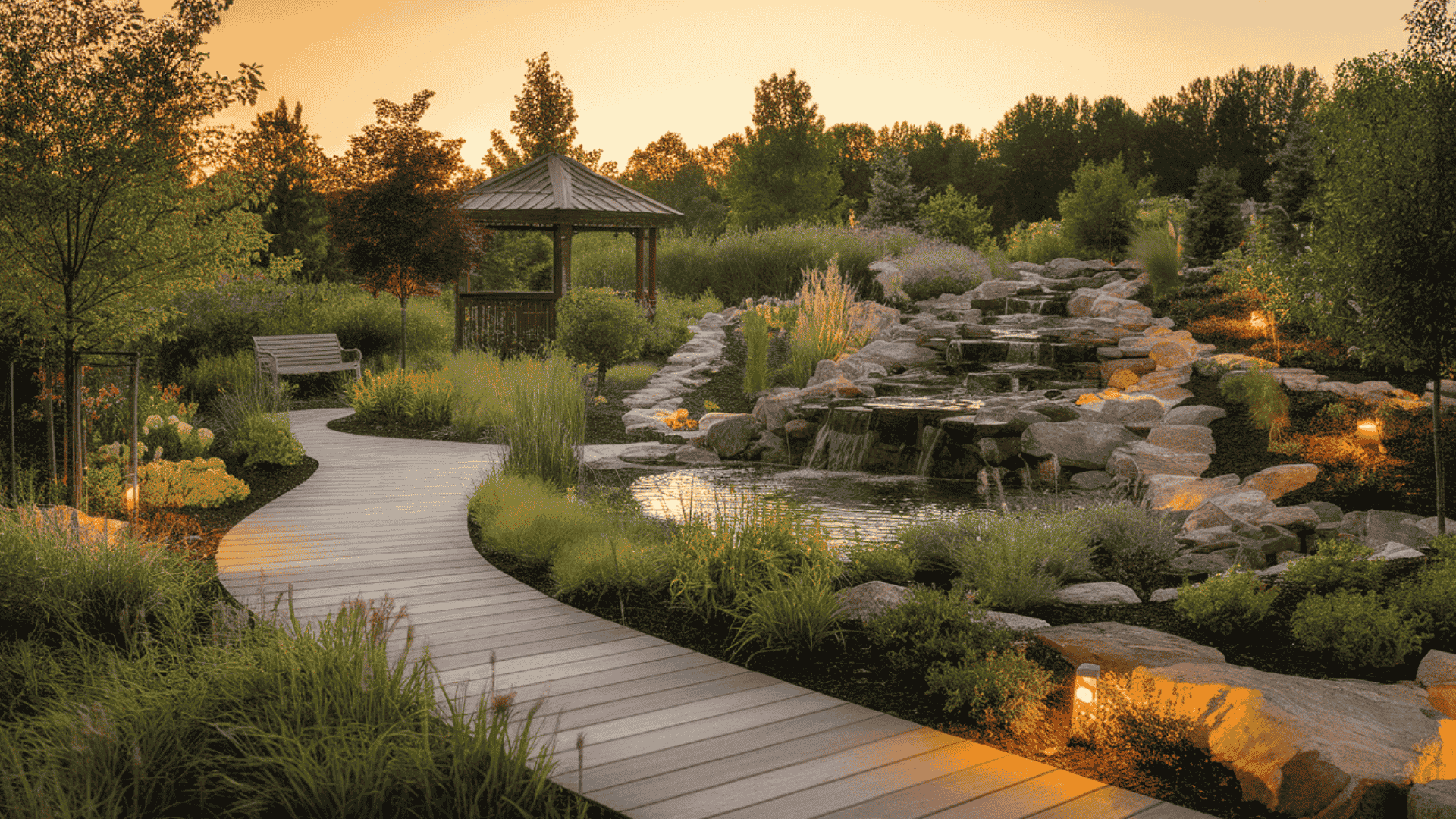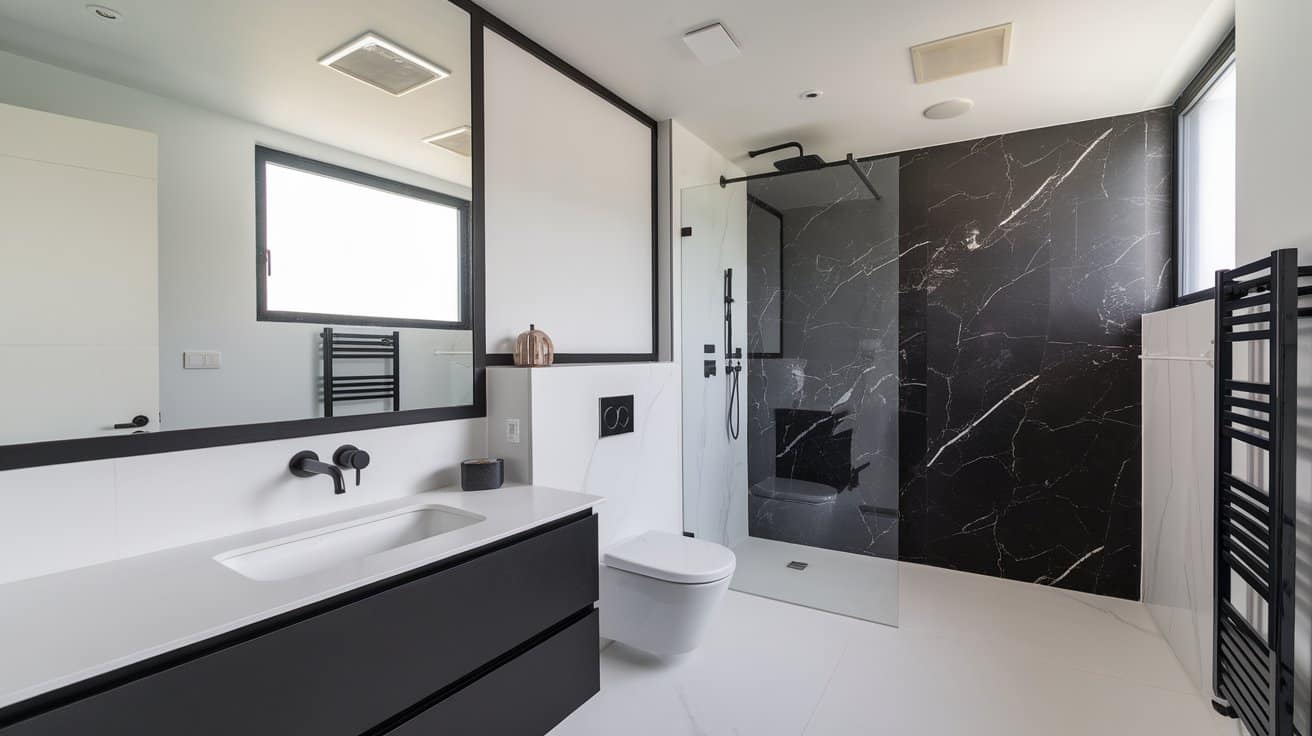Looking for plants that climb quickly and stay green all year? Here are fast-growing climbing options that deliver coverage without delay.
Quick-growing climbers bring instant coverage and color. They cover bare walls, fences, or pergolas while keeping their leaves through winter.
Unlike deciduous climbers that drop leaves in fall, these plants provide constant privacy and color. Whether you need to hide an ugly fence or create a living wall, these climbers work fast.
Some grow several feet in just one season. Plus, many produce flowers that smell wonderful and attract butterflies.
Best of all, these plants require minimal setup and start growing right away. Skip the long wait, plants fill in spaces quickly and stay lush.
Ready to find the perfect climbing plant for your space?
What Are Evergreen Climbers?
Evergreen climbers are plants that grow upward and keep their leaves throughout the year. These plants use different methods to climb walls, fences, and other structures.
Some wrap tendrils around supports. Others use aerial roots to grip surfaces. A few have sticky pads that attach to walls. Unlike deciduous climbers, evergreen varieties retain their foliage throughout winter. These climbing methods influence support choice.
Key characteristics include
- Year-round leaf coverage: Foliage remains green and full through all seasons, providing constant screening and visual interest.
- Vertical growing habit: Plants naturally grow upward rather than outward, making efficient use of small garden spaces.
- Self-supporting mechanisms: Such as built-in climbing methods like tendrils, aerial roots, or twining stems, eliminate the need for constant tying.
- Continuous green color: Leaves stay vibrant throughout the winter months when most plants appear dormant or bare.
These plants serve multiple purposes in gardens. They create privacy screens, cover unsightly structures, and add vertical interest. Many evergreen climbers also produce flowers or berries. Used thoughtfully, they create beautiful focal points near entryways.
What is the main difference from other climbers? They never go bare. While deciduous climbers lose their leaves seasonally, evergreens retain their green foliage throughout the year.
Why Choose Fast-Growing Varieties?
Rapid growth delivers the green results you want quickly. Fast-growing evergreen climbers establish themselves within one or two seasons. This rapid growth offers several benefits for gardeners. This pace is ideal for small-space gardening.
1. Quick Privacy: An empty fence line becomes lush and private in one season. Neighbors disappear behind leafy screens faster than with slow growers. Privacy becomes possible without waiting years for plants to mature.
2. Immediate Impact: Empty vertical spaces fill with greenery quickly. Plain walls become living features. Your garden gains height and structure within a single growing season.
3. Cost Savings: Young climbers cost less than mature specimens. Fast growers reach full size quickly, making small purchases worthwhile. You get the same coverage for less money compared to buying large, established plants.
4. Problem-Solving: Unattractive spots disappear behind fast-growing greenery. Bare pergolas gain shade for summer dining within months. Wind protection develops as plants establish, creating comfortable outdoor spaces faster.
Key Consideration: However, fast growth requires regular maintenance. These vigorous plants need regular pruning to maintain their well-being. Consider your available time before choosing speedy varieties.
13 Best Evergreen Climbers that Grow Fast
Fast-growing evergreen climbers provide year-round coverage while establishing quickly. These vigorous plants give gardeners lush results without the long wait.
1. Star Jasmine
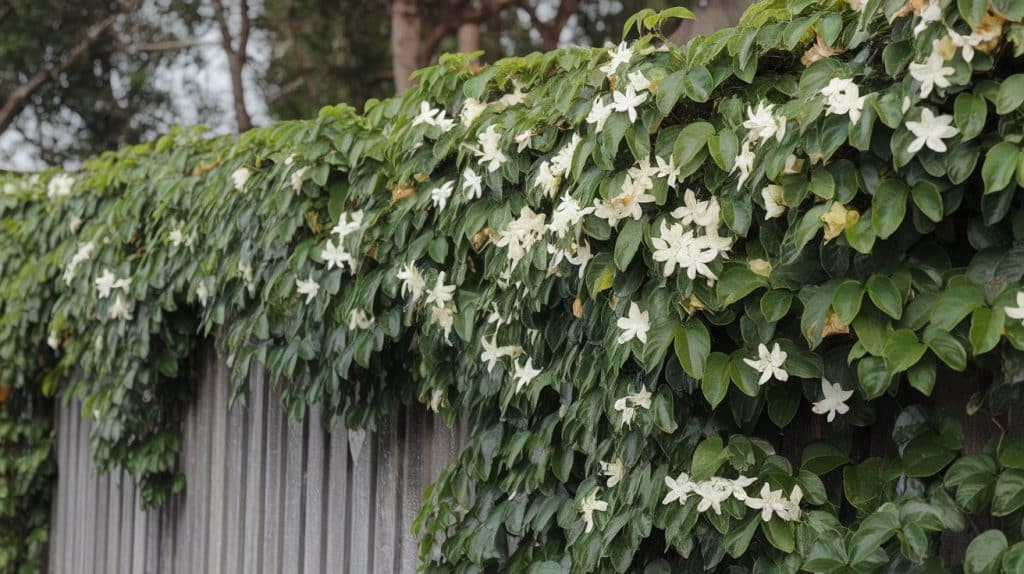
Star jasmine produces white, fragrant flowers from late spring through summer. This climber reaches 20 feet in height and spreads 10 feet in width. Growth rate averages 3-6 feet annually once established. Train this vine on wires or a trellis for tidy coverage.
The glossy green leaves turn bronze in winter. Plants tolerate various soil types but prefer well-drained conditions. Star jasmine thrives in full sun to partial shade.
2. Clematis Armandii
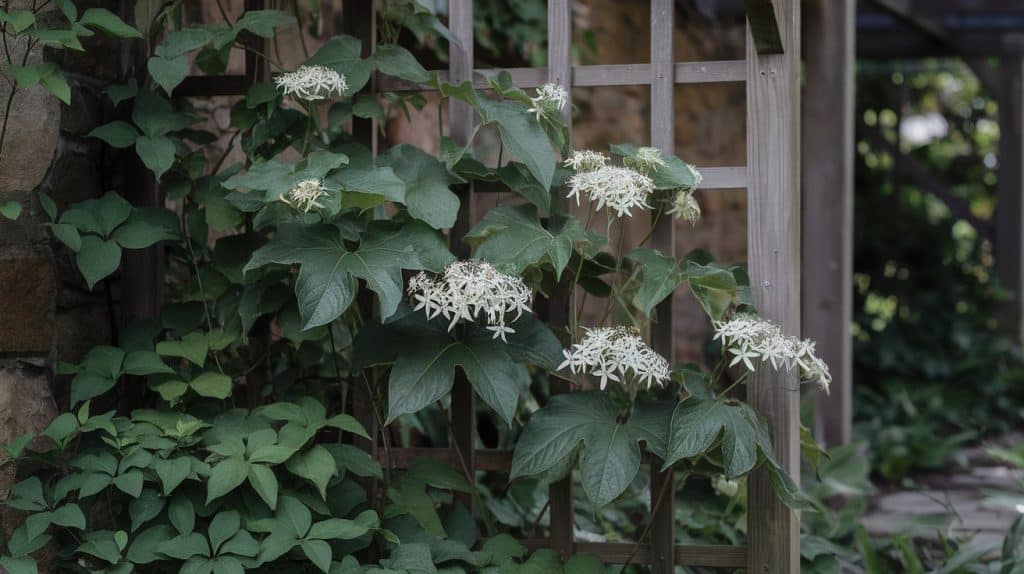
This evergreen clematis stands out among mostly deciduous relatives. Large, leathery leaves provide year-round interest. Fragrant white or pink flowers appear in early spring. Mulch the root zone to keep it cool and encourage flowering.
Plants grow 15-20 feet tall with a similar spread. Annual growth reaches 4-8 feet in good conditions. Sheltered spots away from cold winds work best.
3. English Ivy

English ivy remains one of the fastest evergreen climbers available. Mature plants climb 50-80 feet high using aerial roots. Growth rate often exceeds 9 feet per year.
Dark green leaves come in a variety of shapes and sizes. Some varieties feature variegated foliage with white or yellow markings. Plants tolerate deep shade better than most climbers. Check masonry compatibility before allowing this vine to adhere.
4. Passionflower

Several passionflower species stay evergreen in mild climates. These vigorous climbers produce exotic flowers throughout summer. Growth reaches 15-30 feet with an annual extension of 10-15 feet.
Plants climb using tendrils that wrap around supports. Most prefer full sun and well-drained soil. Regular water during the growing season promotes the best flowering. A single vine can blanket a pergola post by midsummer.
5. Hardenbergia
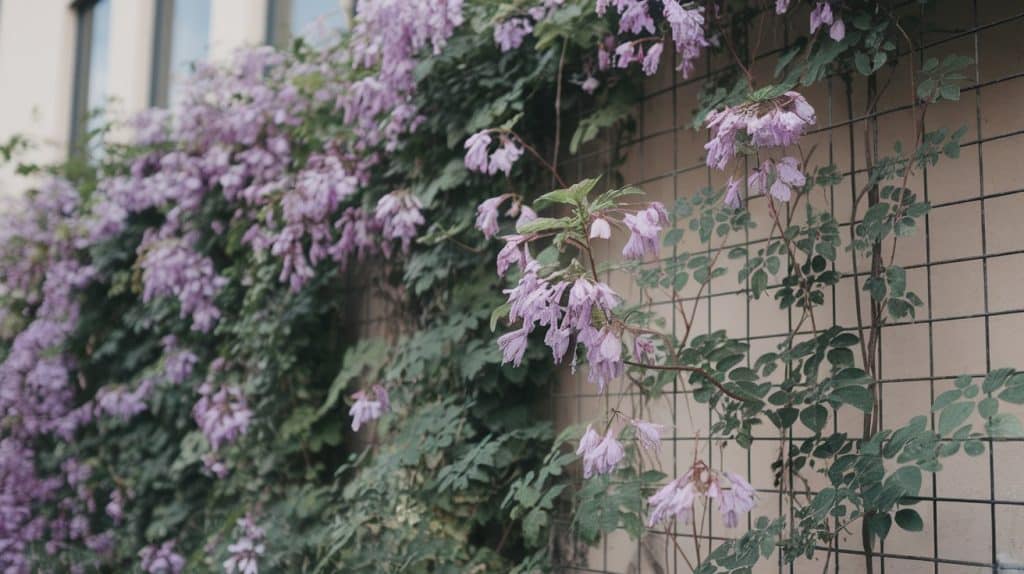
Australian native Hardenbergia offers purple, pink, or white pea flowers. Blooms appear in late winter through early spring. Plants typically reach 10-15 feet high.
The growth rate varies from 3 to 6 feet annually. Hardenbergia tolerates drought once established, but flowers more profusely with regular watering. Protected locations are most effective in colder climates. Use a sturdy frame; this climbing plant becomes dense over time.
6. Canary Creeper

Bright yellow flowers cover canary creeper from spring through fall. This fast grower reaches 10-12 feet in one season. Soft green leaves create an attractive backdrop for blooms.
Plants self-seed readily in warm climates. Canary creeper prefers cool roots and sunny tops. Regular deadheading controls the spread and extends the flowering period. In cooler regions, grow it as a seasonal vine.
7. Bougainvillea

Bougainvillea brings tropical color to warm climate gardens. Papery bracts in pink, purple, orange, or white surround tiny flowers. Growth rate reaches 3-5 feet per year.
Mature plants can reach heights of 15-40 feet, depending on the variety. These climbers need full sun for best flowering. Water deeply but infrequently once established.
8. Climbing Hydrangea
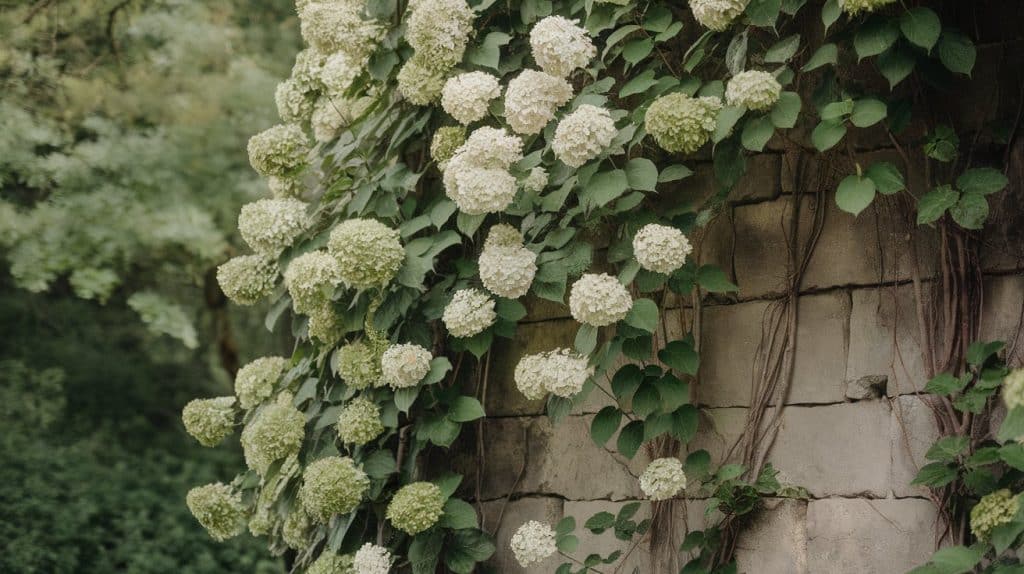
Evergreen climbing hydrangea differs from common deciduous types. Large white flower clusters appear in summer. Plants initially grow slowly, then accelerate after establishment.
Mature height reaches 30-50 feet. These climbers prefer partial shade and moist soil. Protection from the hot afternoon sun prevents leaf scorch.
9. Chocolate Vine
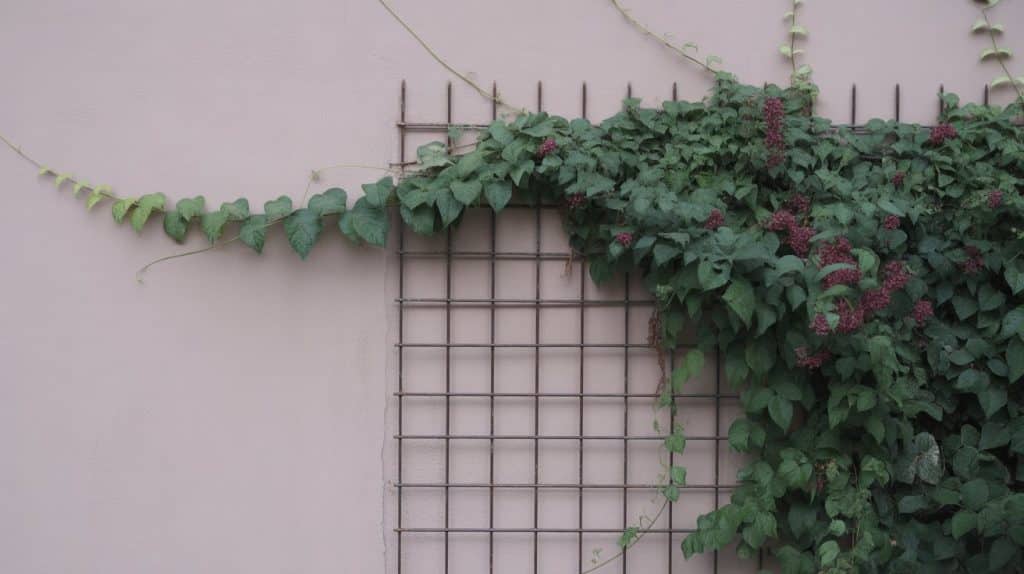
Chocolate vine earns its name from cocoa-scented flowers. Purple blooms appear in spring before new growth. Fast growth covers 15-20 feet within two years.
Mature plants can reach heights of 20-40 feet. This adaptable climber thrives in both sun and shade. Regular pruning helps prevent tangled growth and maintains the plant’s shape.
10. Trumpet Vine
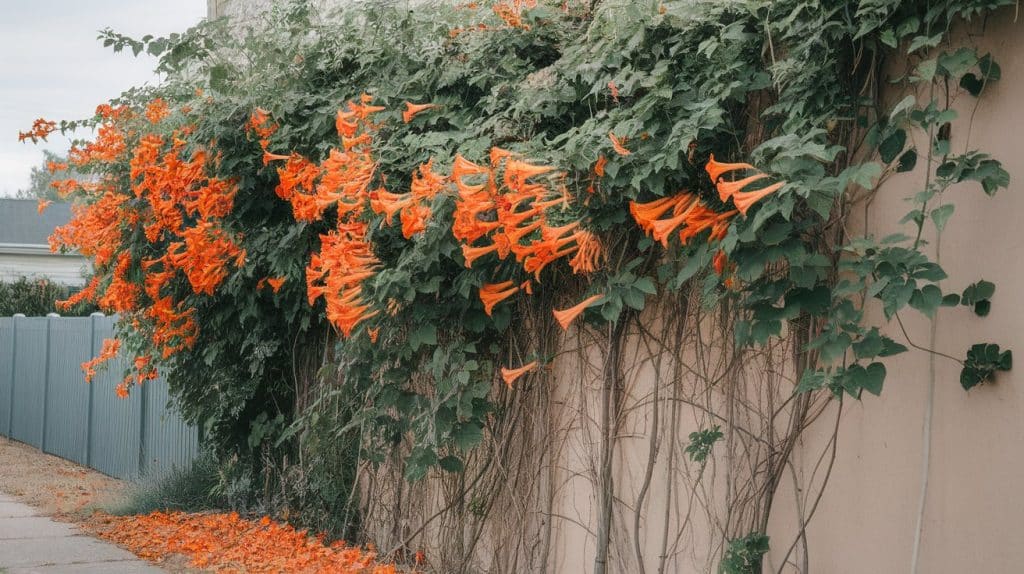
Several trumpet vine species stay evergreen in warm climates. Orange, red, or yellow trumpet flowers are attractive to hummingbirds. Plants grow 10-15 feet per year once established.
Ultimate height reaches 30-40 feet. Firm aerial roots grip surfaces tightly. Plant in contained areas to control the aggressive spread of the plant through root suckers.
11. Carolina Jessamine
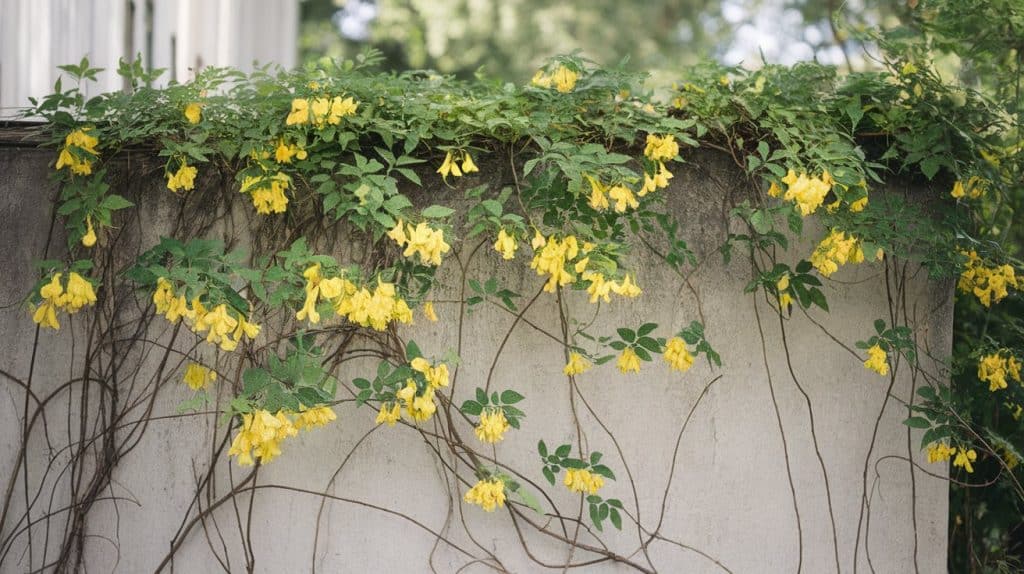
Carolina jessamine produces fragrant yellow flowers in late winter. This native southeastern climber stays evergreen in mild areas. Annual growth averages 3 to 5 feet.
Twining stems can reach heights of 10-20 feet. Plants flower best with some winter chill. Keep away from children and pets as all parts contain toxins.
12. Evergreen Wisteria
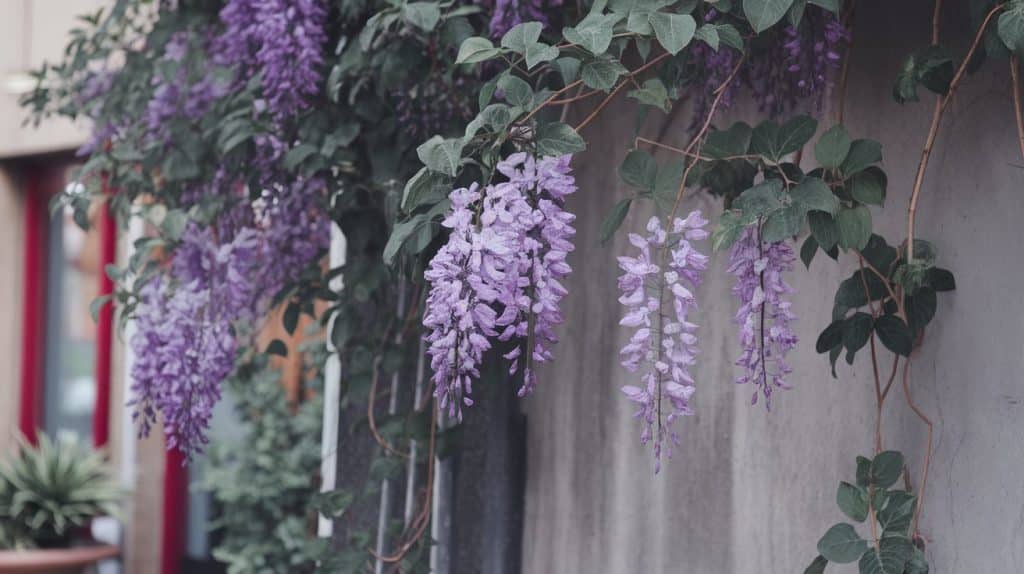
Millettia reticulata offers wisteria-like flowers without aggressive growth. Purple blooms appear in summer rather than spring. Growth rate reaches 6-10 feet annually.
Mature plants can reach heights of 20-30 feet. Less aggressive than traditional wisteria makes maintenance easier. Regular water during flowering improves the display.
13. Cape Honeysuckle

Cape honeysuckle produces tubular orange or yellow flowers. Blooms attract hummingbirds from summer through fall. Growth rate averages 4-6 feet annually.
Plants reach 15-25 feet at maturity. Full sun to partial shade suits cape honeysuckle. Established specimens handle moderate drought well.
Which Plants Grow Best in Sun or Shade?
Light requirements vary among evergreen climbers. Choosing plants that match your site conditions ensures success. Each climber thrives in specific light levels that affect growth and flowering patterns.
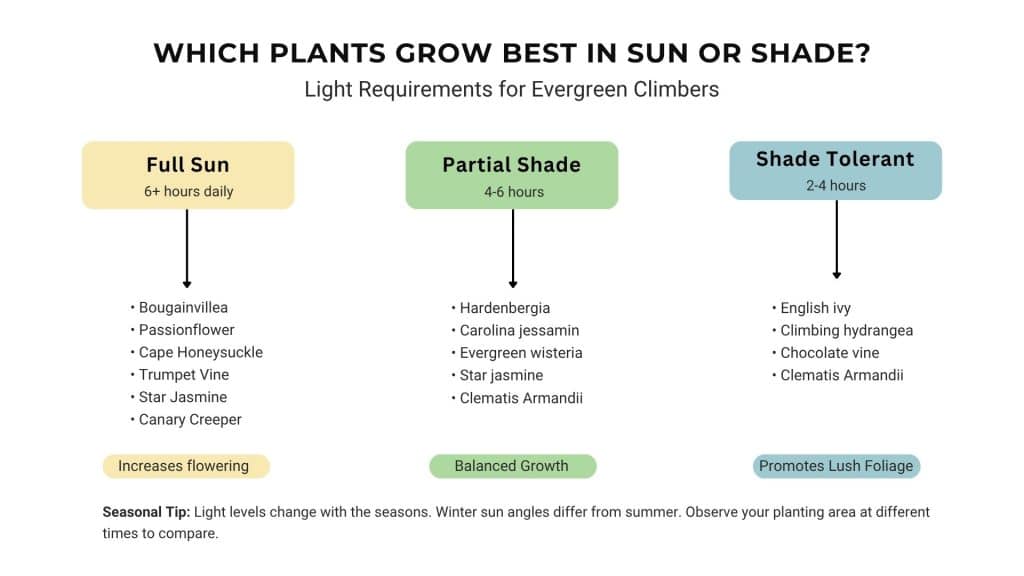
Most climbers adapt to various conditions, but they exhibit different results. Full-sun lovers produce abundant blooms, while shade varieties develop thicker foliage.
Star jasmine and Clematis Armandii prove versatile, growing well in a range of light conditions.
Consider seasonal changes when selecting plants. Buildings and trees create shifting shadow patterns throughout the year.
Morning sun differs from afternoon sun in terms of intensity and heat. Watch your intended planting area at different times before making final choices.
How to Pick the Right Climber for Your Garden?
Selecting suitable climbers requires matching plants to your specific situation. The right choice depends on climate, space, and maintenance preferences.
Check hardiness zones for your area first. Some evergreen climbers remain green only in mild winters, while others can withstand cold temperatures with protection. Match mature plant size to available room.
Key selection factors:
- Climate compatibility and cold tolerance for your region.
- Available space for mature growth, including height and width.
- Structural strength to support the climber’s weight.
- Dedicate this maintenance time to pruning.
Pro Tip: Visit local gardens to see how different climbers perform in your specific climate before making a purchase.
Where to Plant Evergreen Climbers?
Choosing the correct location sets your climbers up for success. Each position offers unique growing conditions that affect plant establishment and long-term health.

Beyond basic placement, consider practical factors for each location. Wall foundations often have alkaline soil from concrete leaching.
Fence lines may have property restrictions or neighbor considerations. Pergola plantings affect outdoor living spaces below.
Tree companions compete for water and nutrients. Trellis systems need proper anchoring before plants add weight.
Think about seasonal changes, too. Winter winds hit exposed fences harder than sheltered walls. Summer shade patterns shift as trees leaf out.
Rain runoff from pergolas can create dry spots underneath. Planning for these variations ensures year-round success.
Bright Tip: Plant on the windward side of structures for natural training assistance as stems naturally lean away from prevailing winds.
Caring Tips for Your Climbing Plants
Regular maintenance keeps evergreen climbers healthy and looking their best. Simple routine tasks ensure that these plants thrive year after year, maintaining their shape and vigor.
Most care happens during the growing season when plants actively produce new shoots and flowers.
- Prune after flowering for spring bloomers, late winter for summer types.
- Tie the new shoots to supports every 3-4 weeks during the growth period.
- Water deeply once a week, rather than watering shallowly frequently.
- Apply fertilizer in early spring and again in midsummer for sustained flowering.
- Remove dead or damaged growth immediately when you spot it.
- Check that ties allow room for stem growth.
Proper watering and feeding keep plants strong enough to resist pests. Regular inspection catches issues early when they’re easiest to fix.
Conclusion
Fast-growing evergreen climbers change gardens quickly and efficiently.
These climbers offer beauty, privacy, and fast garden upgrades. With options ranging from fragrant star jasmine to colorful bougainvillea, every garden situation has a perfect match.
Success depends on selecting plants suited to your specific climate and conditions. Regular care keeps these vigorous growers looking their best throughout the year.
Choose wisely, and your walls will be filled with color and life, creating beautiful private outdoor rooms within just a few months. Now you have the knowledge to choose and grow these remarkable plants successfully.
Ready to start your vertical garden?
Please share your favorite evergreen climber in the comments below and let us know which one you’re planning to grow!
See more ideas and inspiration for flower lovers.
Frequently Asked Questions
Which Evergreen Vines Create Effective Privacy Screens?
Fast-growing options include English ivy, star jasmine, clematis armandii, and evergreen honeysuckle. These dense climbers provide year-round coverage for fences and walls.
Are There Climbing Plants that Keep Leaves Year-Round?
Star jasmine maintains its glossy green foliage throughout the winter while producing fragrant white flowers. Its oval leaves remain attractive even in the coldest months.
Will Hummingbirds Visit Clematis Flowers?
Yes, hummingbirds feed on clematis nectar and pollen. The bright colors and tubular flower shapes attract these tiny birds throughout the blooming season.
